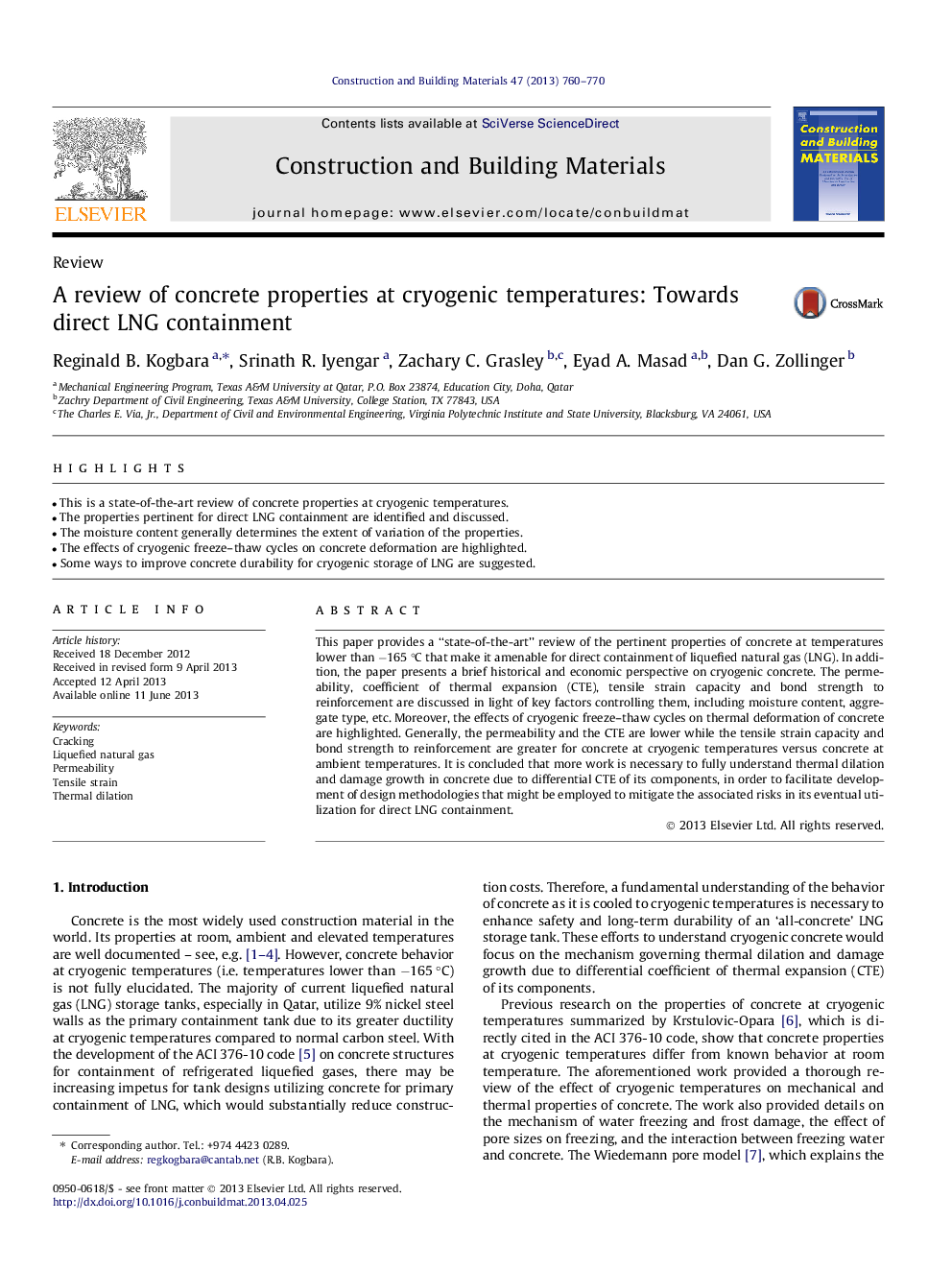| Article ID | Journal | Published Year | Pages | File Type |
|---|---|---|---|---|
| 6725741 | Construction and Building Materials | 2013 | 11 Pages |
Abstract
This paper provides a “state-of-the-art” review of the pertinent properties of concrete at temperatures lower than â165 °C that make it amenable for direct containment of liquefied natural gas (LNG). In addition, the paper presents a brief historical and economic perspective on cryogenic concrete. The permeability, coefficient of thermal expansion (CTE), tensile strain capacity and bond strength to reinforcement are discussed in light of key factors controlling them, including moisture content, aggregate type, etc. Moreover, the effects of cryogenic freeze-thaw cycles on thermal deformation of concrete are highlighted. Generally, the permeability and the CTE are lower while the tensile strain capacity and bond strength to reinforcement are greater for concrete at cryogenic temperatures versus concrete at ambient temperatures. It is concluded that more work is necessary to fully understand thermal dilation and damage growth in concrete due to differential CTE of its components, in order to facilitate development of design methodologies that might be employed to mitigate the associated risks in its eventual utilization for direct LNG containment.
Related Topics
Physical Sciences and Engineering
Engineering
Civil and Structural Engineering
Authors
Reginald B. Kogbara, Srinath R. Iyengar, Zachary C. Grasley, Eyad A. Masad, Dan G. Zollinger,
